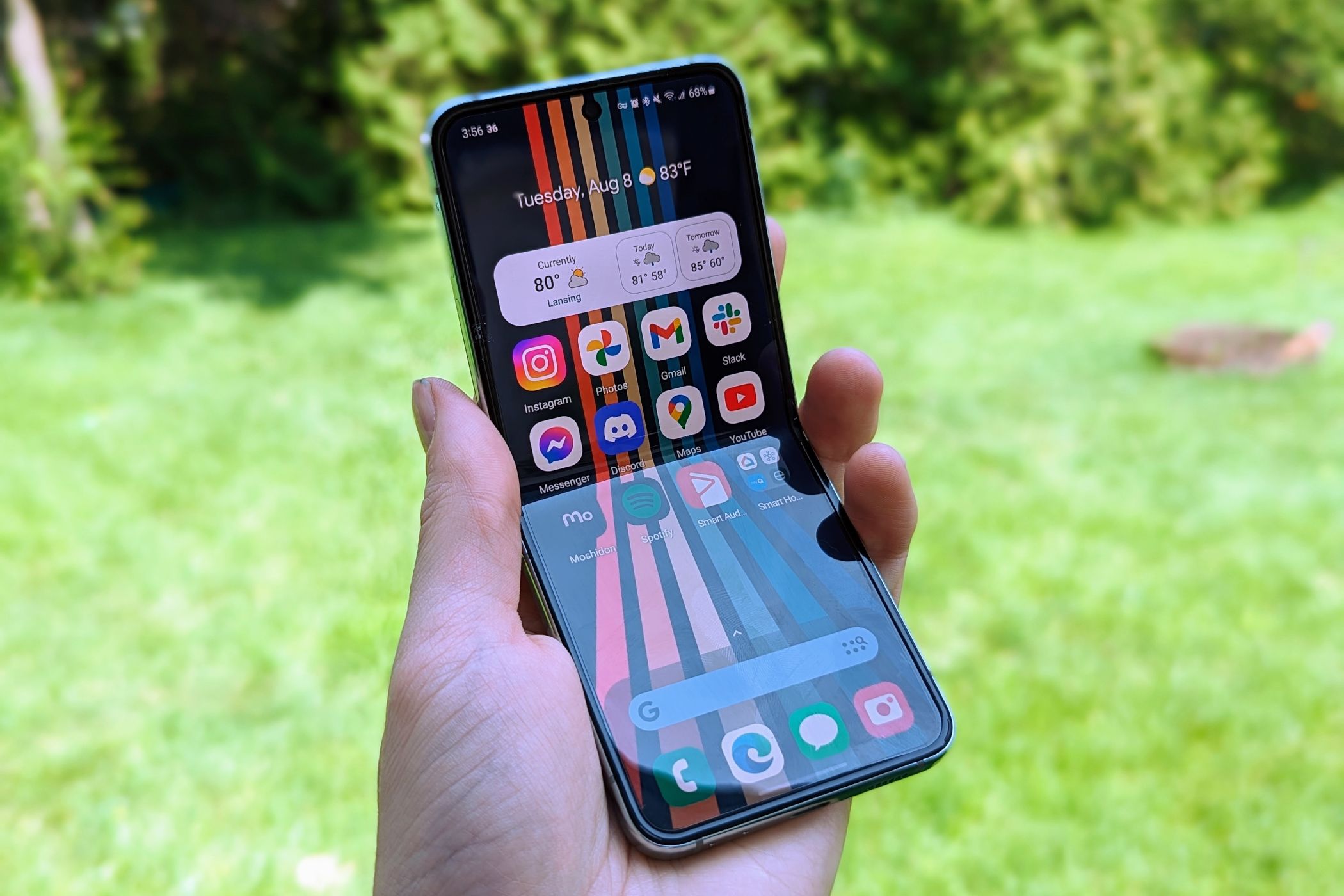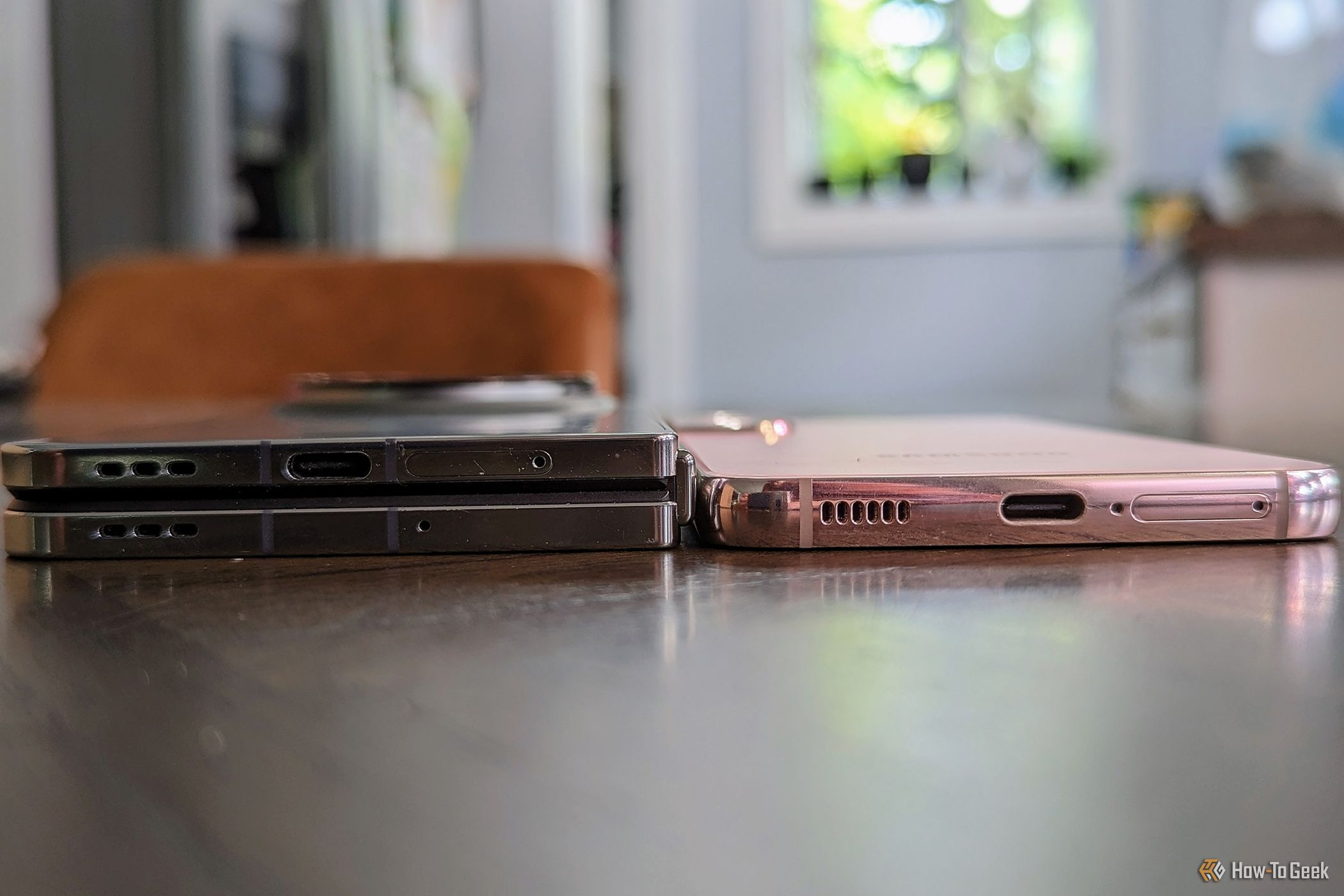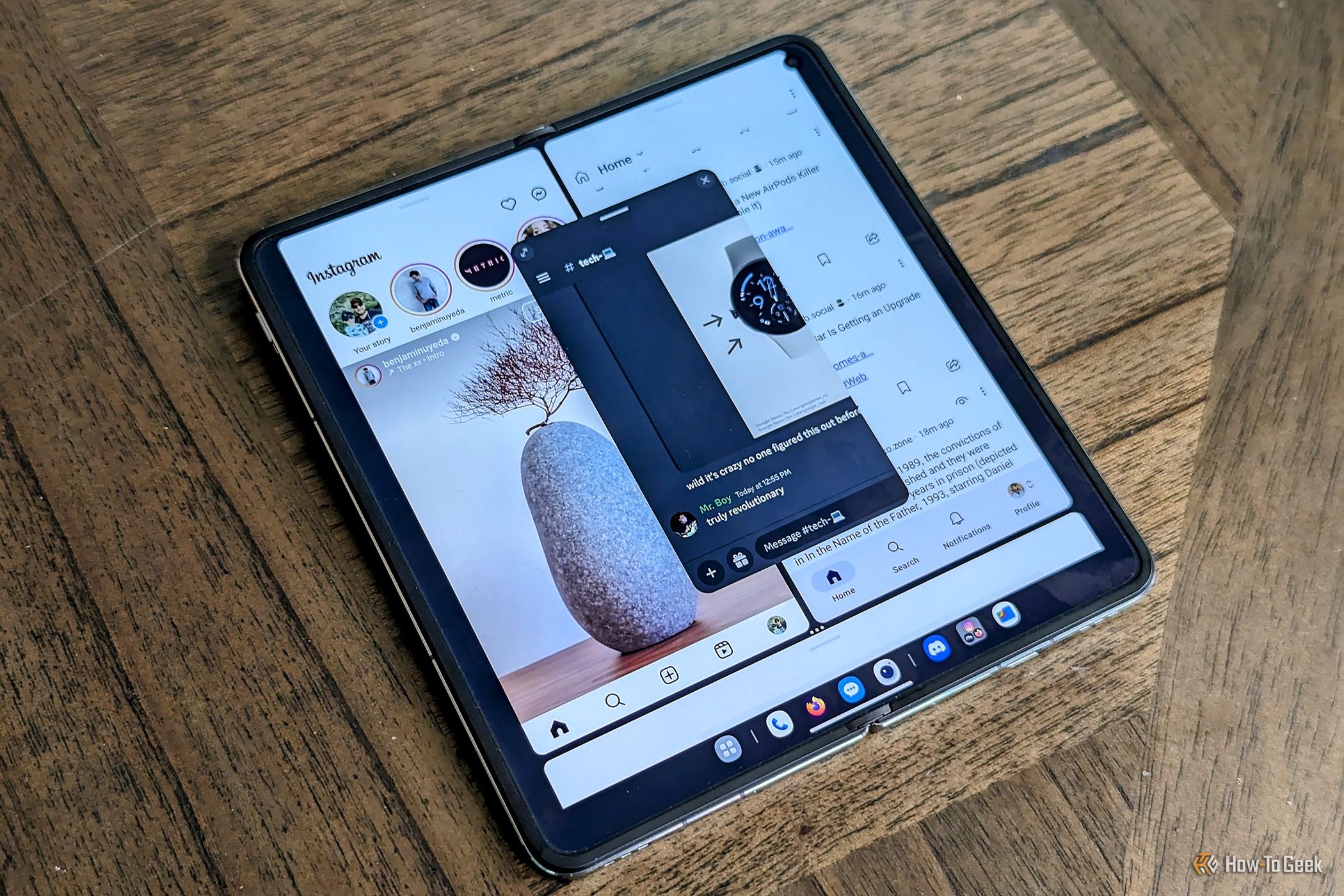Key Takeaways
- Book-style foldable phones offer a tablet-like experience, making them great for media consumption and multitasking.
- The perception of book-style foldable phones being fragile has been disproven, as they can hold up well with regular use.
- Foldable phones combine the advantages of both smartphones and tablets, providing the best of both worlds in terms of portability and screen real estate.
In the world of foldable phones, there are two styles to choose from: book-style and flip-style. For a long time, I was of the opinion that flip-style foldables—like the Galaxy Z Flip and Moto Razr—were the more practical form factor. I finally got my hands on a book-style foldable phone, and boy, was I wrong.
Book-style foldable phones—the ones that fold from a standard phone size to a tablet—have been around for nearly five years. The Samsung Galaxy Fold was the first to hit the market (though it had a rocky start). While the folding technology was very impressive, I was never interested in this form factor. I just didn’t see myself needing that large of a screen on a daily basis. The Galaxy Z Flip was the foldable that finally got my attention.
The Downside of Flip-Style Foldables
When the Galaxy Z Flip 3 launched with a larger “Cover Screen” display, I finally hopped on the foldable phone bandwagon. This form factor made more sense to me—a normal-sized phone that folds into a compact square. At first, it was a lot of fun to use. I enjoyed customizing the Cover Screen, and flipping it open with one hand was a refreshing bit of nostalgia. The honeymoon period wore off quickly, though.
Here’s the thing: I don’t know about you, but I use smartphones so, so much more than I ever used my old flip phones. My Android phone is coming out of my pocket for a lot more than just calls and text messages. The repeated action of flipping the Z Flip open every time I wanted to do more than check the time or weather felt tedious. Even when I reviewed the new Z Flip 5, which has a much bigger Cover Screen, I still opened the phone more often than not.
So, eventually, I sold the Z Flip 3 and went back to a regular non-foldable smartphone. I still wasn’t convinced that a book-style foldable was for me, though.
Book-Style Skepticisms
OnePlus Open / Samsung Galaxy S22
I should probably explain why I was so against book-style foldables before I even tried one. First of all, they’re more fragile than a non-foldable phone. That point was hammered home with the original Galaxy Fold. However, my time with the Z Flip 3 did do one thing for me. It made me realize foldable phones aren’t as fragile as I expected. I didn’t baby the phone, and it held up well.
The second thing holding me back was size. A book-style foldable is essentially two regular phones stacked on top of each other, right? That’s a thick and heavy brick in your pocket all day. I’ve never even liked big non-foldable phones for this same reason. The Z Flip 3 was also pretty thick, but its footprint was at least smaller than a regular phone.
Lastly, I simply didn’t think I needed that much screen real estate in my daily life. Productivity is not a top priority in a phone for me. If I’m doing serious work, I’m sitting at my computer. People always talk about how great it is to have multiple apps open at once on the big inside display, but that’s not something I felt like I was missing. I didn’t think I was important enough to need a big screen in my pocket all the time.
My Eyes are Opened
If you’re a regular reader of this site, you may have already seen my first experience with a book-style foldable phone. It was the OnePlus Open, which I reviewed in October 2023. Spoiler: I liked that phone a lot, and it’s the reason why my views have changed.
I learned that a book-style foldable phone is really for more than just the type of productivity that has people saying the word “corporate” and “executive” a lot. It’s essentially a tablet, and tablets are excellent media consumption devices. I’m not sure why I never thought about it like that.
It’s awesome to be able to open your phone for a bigger screen when you’re chilling on the couch at the end of the day. I have an iPad, but I find myself using my foldable much more simply because it’s with me every day anyway. I don’t have to worry about keeping a tablet charged up or messing around with syncing apps when I want to continue something I started on my phone.
Almost everything that you would want to do with a tablet can be achieved with a book-style foldable. Watching YouTube on a big screen, showing people photos without needing to pinch to zoom, putting a list app and grocery store app side-by-side, etc. These are tasks I used to reach for my iPad for, and now I don’t have to.
However, in most situations, I use the Cover Screen display like any ‘ol regular smartphone. Not having to flip it open every time I want to quickly read an email or Google something is a huge advantage over a flip-style foldable. Plus, in the case of more recent book-style foldables, they’re not much heavier than a regular phone, which is another bonus. I feel like I’m getting the best of both worlds—smartphone and tablet.
I was mistaken in thinking a foldable phone is only useful for people with high productivity needs. The truth is if you’ve been interested in buying a tablet or you already have one, a foldable phone will give you a very similar experience (especially compared to an Android tablet). These devices are starting to hit their stride. I don’t know if I can go back to a non-foldable phone.
source


